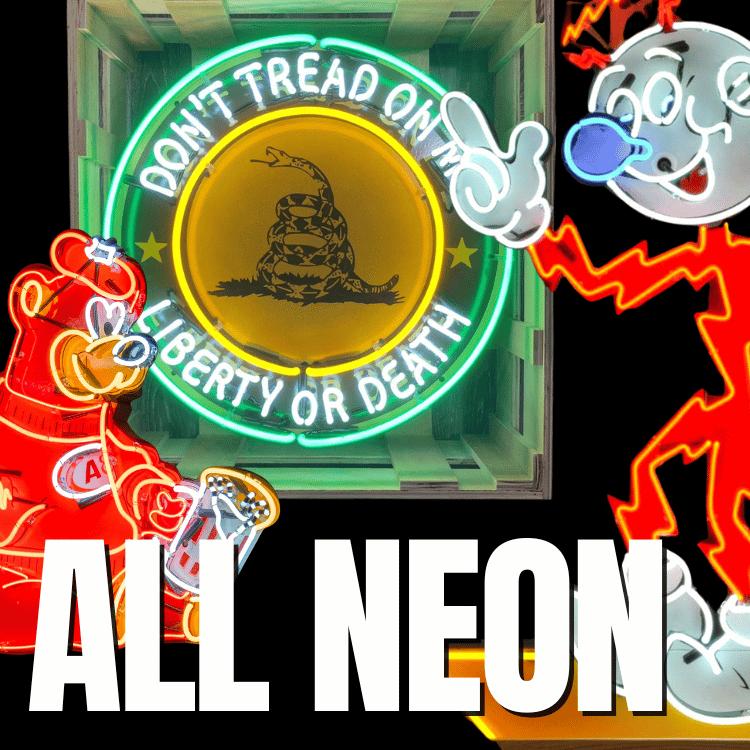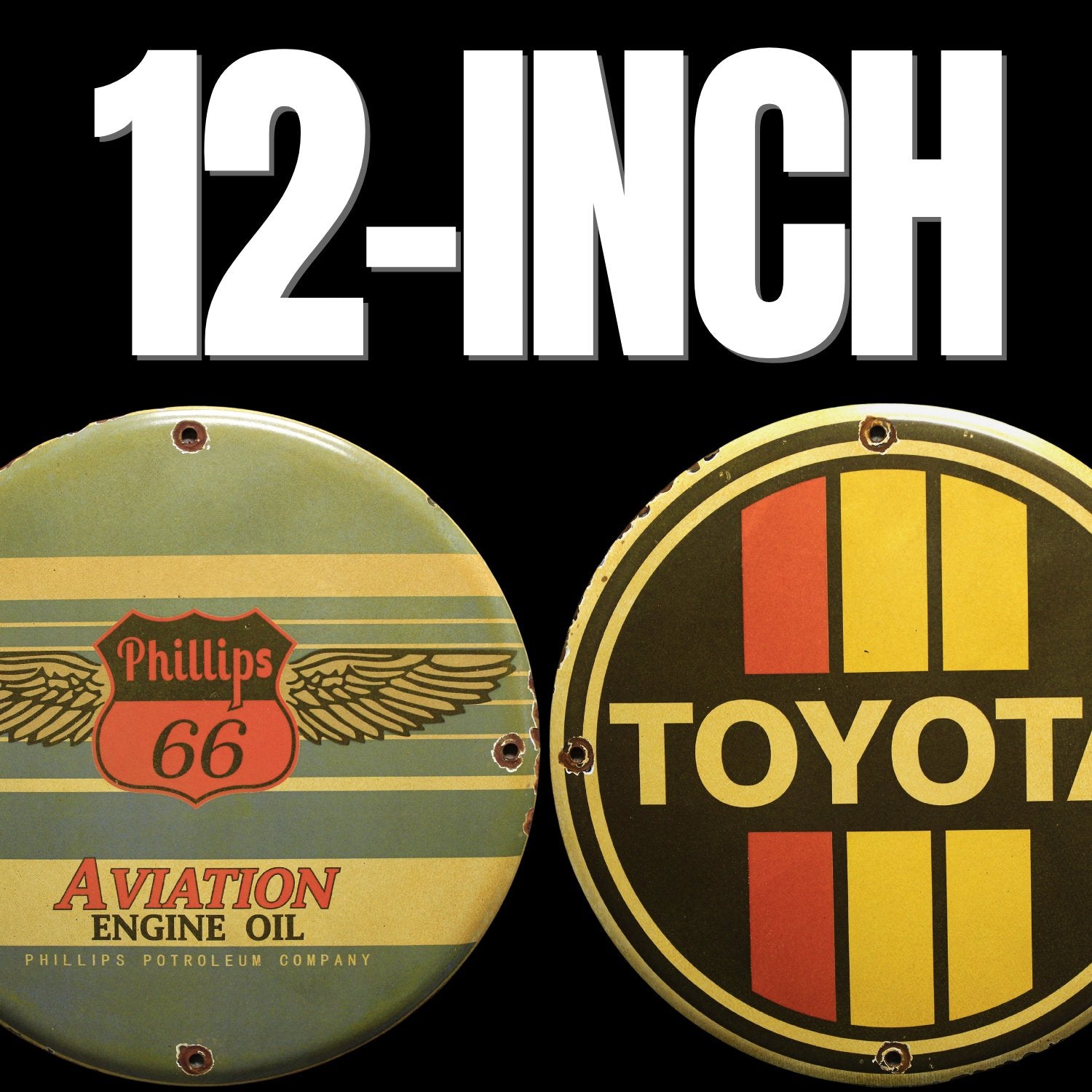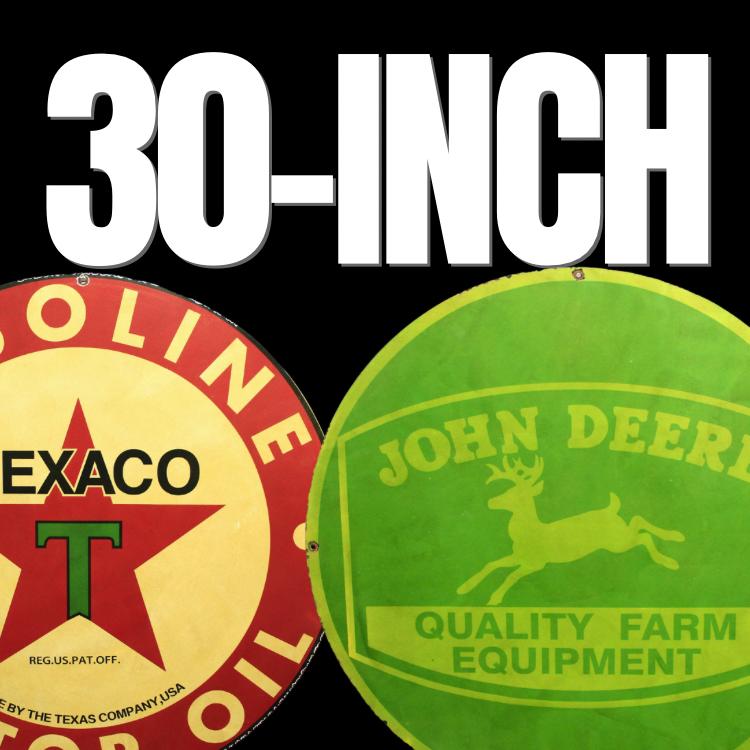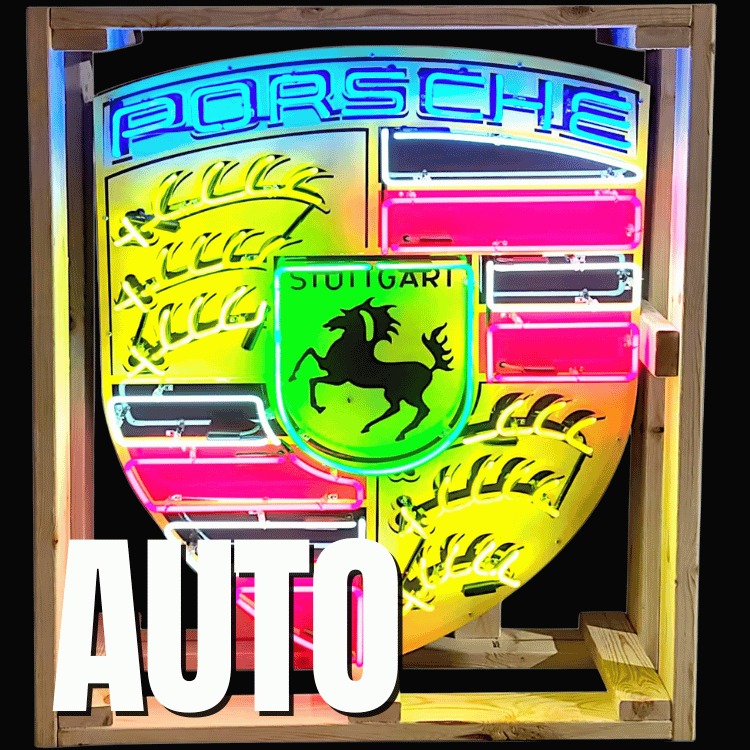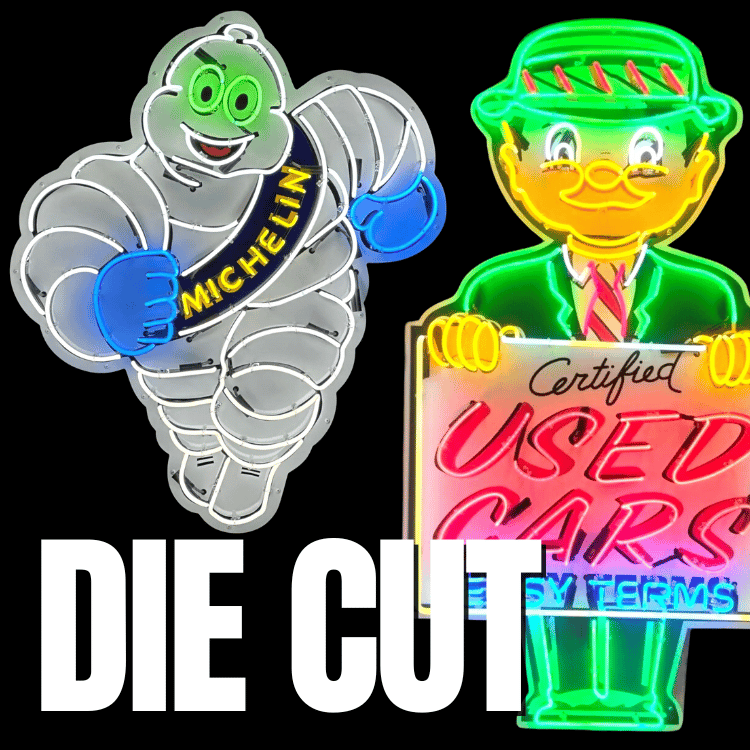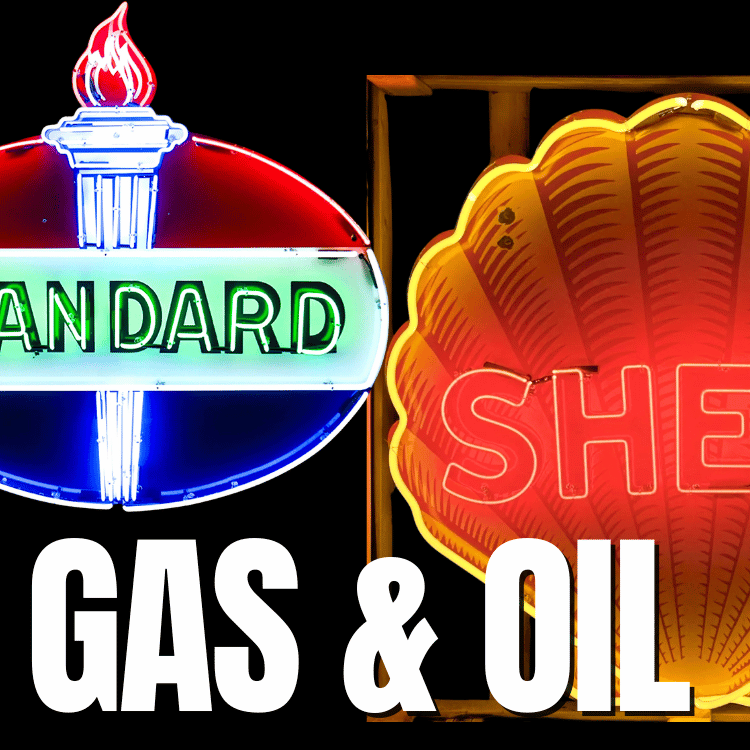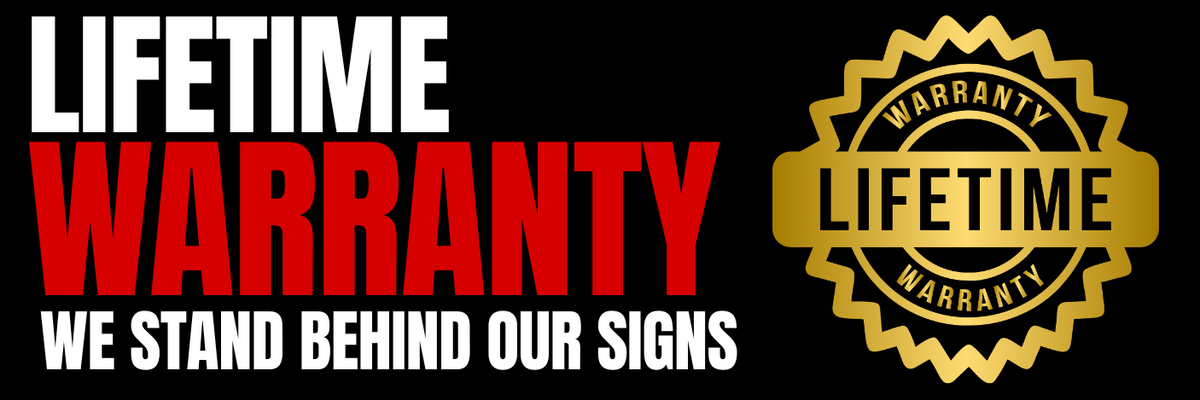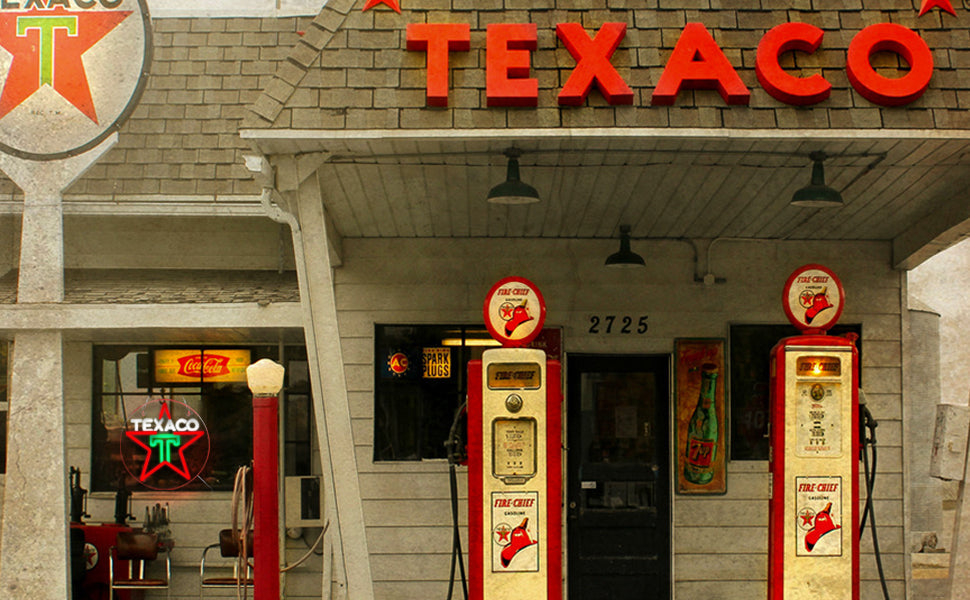
Texaco Gasoline & Motor Oil: The Star That Lit Up America’s Highways
Texaco: The Star That Lit Up America’s Highways
Few names in gasoline and motor oil are as instantly recognizable as Texaco. For more than a century, the company’s red star has been a symbol of American travel, trust, and innovation. From sponsoring some of the first radio and TV shows to producing porcelain enamel signs that now sell for tens of thousands of dollars at auction, Texaco carved out a unique place in both motoring and popular culture.
From Texas Oil Boom to Household Name

Texaco was born in 1902, right in the middle of the Texas oil boom that followed the legendary Spindletop gusher. What started as The Texas Company quickly grew into a brand that spanned the entire country. By the 1920s, Texaco had become the first U.S. oil company to market gasoline under a single brand name in all 48 states—a move that made the red Texaco star a truly national icon.
The name itself came from a shorthand employees used for telegrams: “Texaco.” Add in the bold five-pointed star and green “T,” and the company had a logo that was simple, striking, and built to last.
Fire Chief & Sky Chief: Fuels With Personality
Instead of just selling “regular” or “premium” gas, Texaco gave its products personality.
- Fire Chief Gasoline debuted in the 1930s. Marketed as the same high-octane fuel trusted by fire engines, it quickly became known for both its power and its iconic fireman’s helmet logo. Texaco even sponsored The Fire Chief radio show starring comedian Ed Wynn, making the fuel a household name.
- Sky Chief Gasoline arrived in 1938 with an aviation theme. Ads promised “power to take you anywhere,” reinforced by images of planes soaring through the skies. The brand ran for decades and became one of Texaco’s most successful campaigns.
By turning gasoline into a story, Texaco stood out from competitors and gave drivers something to remember.
Texaco in Entertainment
Texaco didn’t just advertise—it became part of entertainment history.
- Radio & TV Sponsorships: The company backed radio hits in the 1930s and later brought its brand to television with Texaco Star Theater. Hosted by Milton Berle, it became one of the most popular shows of early TV, earning Berle the nickname “Mr. Television.”
- Cartoon Partnerships: Texaco often used playful cartoon characters in advertising, especially for Sky Chief, tying the brand to fun, speed, and family life.
By weaving itself into popular culture, Texaco made sure its name was known well beyond the gas station.
The Signs That Defined an Era
One of Texaco’s most enduring legacies is its porcelain enamel signage. Bold, durable, and instantly recognizable, Texaco signs once hung at stations across the country. Today, they’re some of the most valuable pieces of petroliana (gas & oil collectibles).
- Large Texaco Gasoline & Motor Oil porcelain signs can bring $30,000 to $75,000 at major auctions.
- Rare examples—especially early designs in excellent condition—have been valued at $100,000 or more.
- Collectors also prize Texaco’s Fire Chief and Sky Chief neon signs, which showcase the brand’s creative marketing at its peak.
These signs weren’t just advertising—they were part of the American roadside experience. For drivers traveling Route 66 or filling up before a family trip, the glowing Texaco star was a symbol of reliability.
Why Texaco Became a Legend
Texaco’s success wasn’t just about gasoline. It was about branding, culture, and trust.
A bold, simple logo – The red star and green “T” became one of the most famous marks in American advertising.
- Nationwide consistency – No matter where you drove, you could count on Texaco’s name and service.
- Story-driven products – Fire Chief and Sky Chief gave personality to fuel, making them memorable.
- Pop culture presence – From radio shows to cartoons, Texaco was everywhere.
- Durable signage – Their porcelain signs became timeless collectibles.
Even though Texaco merged with Chevron in the early 2000s, the brand is still active worldwide. And thanks to its deep roots in culture and design, Texaco remains one of the most recognizable names in motor oil and gasoline history.
Final Thoughts
Texaco isn’t just another old oil company—it’s a brand that helped shape the way America traveled. Its porcelain signs now hang in collections and garages as pieces of art. Its advertising lives on in nostalgia. And its star still shines as a reminder of a time when the open road was king and filling up at Texaco meant you could “trust your car to the man who wears the star.”


